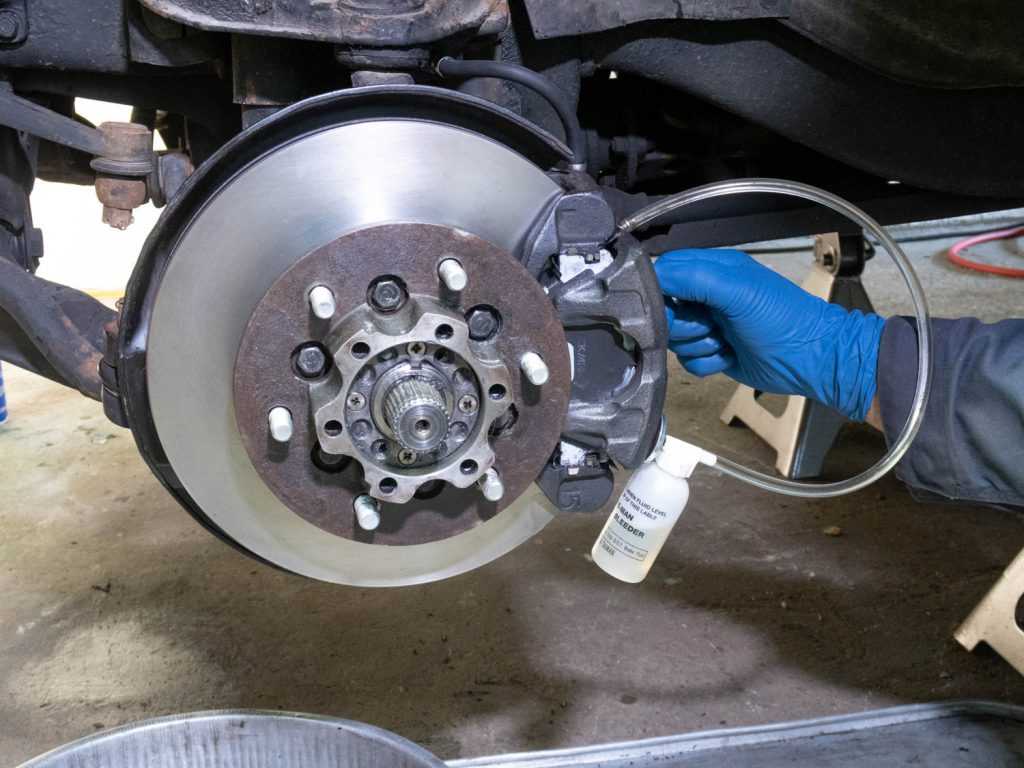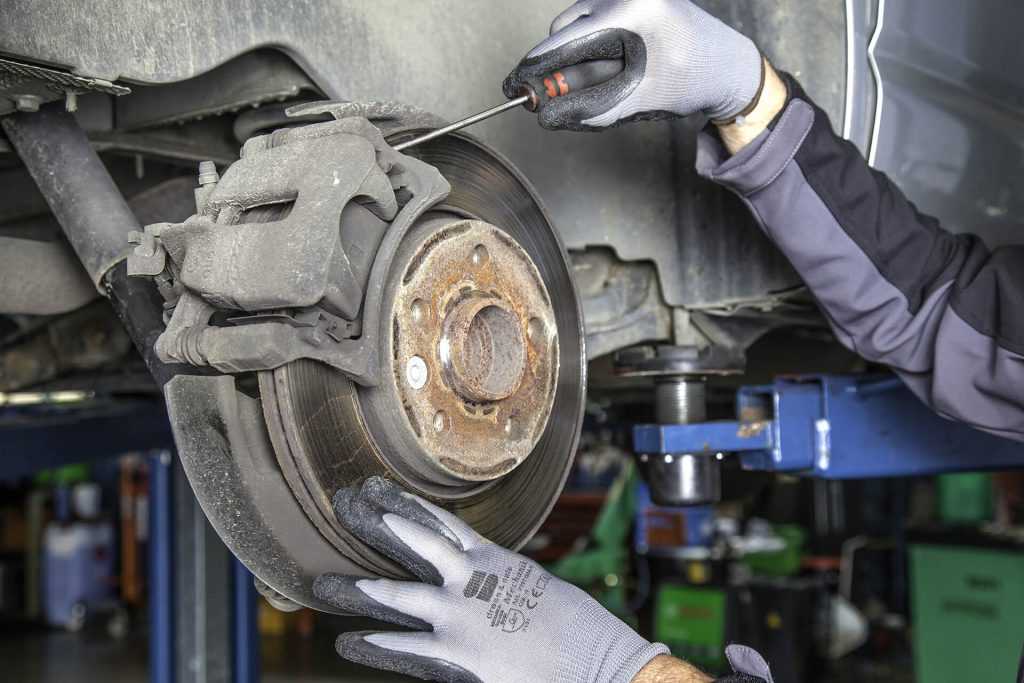How Much Brake Fluid Do I Need For A Flush?
Indeed, most drivers do not think about brake maintenance. All customers who come to fix their brake only when the brake is broken or fails to perform its function. Even if you take care of the brake pad and replace it frequently, you still need a brake fluid flush. So do you know how much brake fluid to flush? If you do not know, don’t worry, we are here to help you.
But first, do you know what brake fluid flush is?
What Is A Brake Fluid Flush?
As you know, the brake is not simply a brake, it consists of a lot of working parts. Typically, a car has disk brakes in the front and either disc brakes or drum brakes in the back. Everything is connected by a system of hoses and tubes that link the brake at each wheel to the master cylinder. The parking brake, power brake booster, and anti-lock system are also part of the overall brake system.
When you need to hit the brake pedal, the plunger pushes against the master cylinder. Through the connected hose, the master cylinder forces the brake fluid to the brake at each wheel. At the disk brakes, the fluid is forced into a caliper. The caliper presses the fluid against a piston that squeezes the brake pads against the disk and forces the wheel to slow or stop. At the drum brakes, the fluid is forced into the wheel cylinder then pushes the brake shoes against the drum to stop at the wheel.
So you know the brake fluid function, it is important to help the brake process go smoothly. But as the brake system’s components deteriorate over time, rust, dust, or other debris flaking off can land in your brake fluid, making your brake not well anymore. It happens and you know that you have to do brake fluid flush.
A brake fluid flush is taking all of the old, dirty brake fluid out of your system and replacing it with fresh, clean fluid. This process is important for every car to make sure the car works properly. So you already know what brake fluid to flush, let’s move on to how much brake fluid to flush!

A brake fluid flush is taking all of the old, dirty brake fluid out of your system and replacing it with fresh, clean fluid. This process is important for every car to make sure the car works properly. So you already know what is brake fluid flush, let’s move on to how much brake fluid to flush!
How Much Brake Fluid To Flush?
No one expects to face a car with a broken brake. But when it happens, you should know what to do. Someone came to us and asked how much brake fluid do I need for a flush. You should indeed know how much brake fluid to flush. By that, you will be able to change the situation.
It is believed that the answer to the question of how much brake fluid to flush is 500 ml. For the normal car which the fluid is closer to the Min but still has a lot, 500 ml is enough to perform a bleed on a set of cycle brakes (front and rear). And it is only true in the case that the brake fluid is not contaminated. If the old brake fluid is particularly dirty or discolored we recommend completely flushing out the old fluid and replacing it with new. In this case, you may need additional fluid usually near 1 liter. A good rule of thumb is to have your brakes flushed about every 30,000 miles (48,280 kilometers) or so.

When replacing brake pads, it is very important that the old fluid is removed and it is not allowed to contaminate the system. The correct procedure is to crack open the bleed valve and allow the old dirty fluid to escape to waste before inserting the new pads. Once the new pads are in place, the reservoir should be topped up and then the new pads should be seated by pumping the pedal, making sure that the reservoir is kept full at all times.
That is all about how much brake fluid to flush. Keep in mind that it is important to use the correct amount of fluid. Now, let’s talk about the importance of brake fluid flush.
Is Brake Fluid Flushing Really Necessary?
As we usually talk to customers, don’t think about your brakes until they stop working but you should take good care of your brakes. You’ll replace the pads and resurface the rotors as needed. Still, when your mechanic recommends that you get your brake system flushed, do you think you should do it or save the cash?
See more:
- The Effects Of Brake Fluid On Car Paint And How To Remove It
- Fixing A Brake Fluid Leak In Easy Steps
- How Often Should You Change Brake Fluid? Looking Into The Facts
As we mentioned above, by the time, the brake turned bad and the brake fluid did the same thing. The rubber in the valves in the master cylinder, calipers, and wheel cylinders deteriorate. Other than that, moisture can also get in the system. That leads to rust, which leads to more nasty bits in your brake fluid. Moreover, the fluid itself can get old and worn out. All this adds up to a brake system with compromised effectiveness and decreased stopping power.
When the brake fluid gets contaminated by impurities, you put the entire engine at risk. So brake fluid flush is really important in keeping your car working properly. Do not hesitate when you need to replace new fluid, otherwise, you give the car a chance to be worn out as quickly as possible.
Understanding more about the brake fluid flush process in this video:
How Often Do You Need A Brake Fluid Flush?
Do you know that every 16,000 – 25,000 km, the car will need to step on the brake more than 75,000 times? This shows that the frequency of use of vehicle brakes is very high. Therefore, you need to periodically check, flush, and replace brake fluid.
Many car manufacturers recommend that the time to flush and change brake fluid should be about every 2 years. If you often drive your car long distances, in harsh conditions, you can change the oil sooner. Currently, many new cars are equipped with brake fluid sensors. If the brake fluid is too low, the car will automatically signal the driver.
Sum Up
You can answer the question of how much brake fluid to flush. What you should do is check your car brake frequently to make sure it is working well. If not, take your car to a trustworthy mechanic, the specialist will help you to diagnose the problem. Check out other maintenance tips to better understand your car problem and know what to do when needed.














